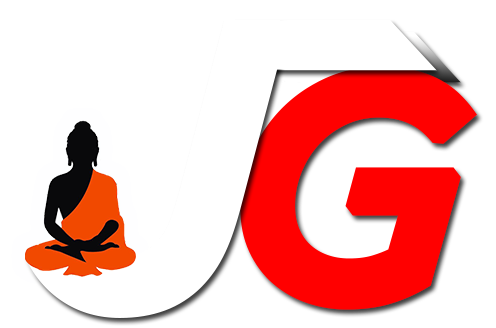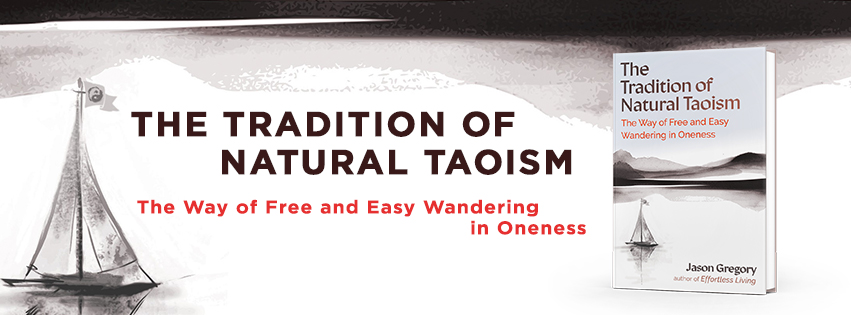Reclaiming Taoism
Taoism is essentially a philosophy based on the way of nature. But even that statement on its own can be misinterpreted due to one’s own personal, social, cultural, or religious understanding of the way of nature. For Taoism, even though this definition seems self-explanatory, it is complex to understand and even more difficult to live by. This entire book will explain what it truly means to be in accord with and to follow the way of nature, the Tao. But before that, we truly need to comprehend that Taoism is essentially a natural philosophy.
In the age of information saturation, Taoism, like much else, has fallen victim to misunderstanding, misinterpretation, and misinformation. Its nature is essentially mysterious, so if one has not studied Taoist philosophy extensively, a warped view of the tradition eventuates that, unfortunately, influences other people not schooled in Taoism. It is a constant cycle of misinformation, which has been ramped up since the advent and increased popularity of social media platforms such as YouTube.
These platforms perpetuate misinformation about Taoism, especially that based on incorrect translations of the Tao Te Ching and Chuang-tzu texts. Unfortunately, a lot of these incorrect translations are the most popular versions of these texts—particularly of the Tao Te Ching. These versions have been stripped of their original meaning to make sense to a predominantly Western audience with certain cultural sensibilities. They are easier to follow and poetic for Western minds. Many people enjoy reading them because they relate to us in the here and now. Even I enjoy reading them occasionally. But at the end of the day, they are not correct and distort the original meaning and intent of the Taoist texts.
The most accurate translations are vague and mysterious to the untrained mind. They require deeper contemplation and understanding. They require us to understand the real nuanced meaning of each line from what was truly written in Chinese. Each chapter and rereading elicit a new layer of understanding. We cannot honestly come to a conclusion on those texts after one reading. A deeper inquiry is needed. One that cannot happen in short spurts like five-to-ten-minute YouTube videos based on unclear translations. If you are serious about Taoism, then it is imperative to understand its genuine essence and what it truly is.
A Need for Structure
Though it may seem counterintuitive to the way of Taoism, there is a growing need for structure and clarity on what Taoism is and, essentially, what it means to be Taoist. Despite the lucid, effortless nature of Taoism, we live in an age where some framework is needed to avoid a complete disfiguration of the tradition. It is not just about knowing what particular aspects of Taoism are or even experiencing them, but rather a complete understanding of the tradition is required that will transform your psychology and worldview.
Based on the way of the Tao, many different systems of cultivation were created over the thousands of years since the time of the great Taoist sages Lao-tzu and Chuang-tzu (369–286 BCE) in China’s Warring States period. Most notable are the cultivation methods of martial arts and Traditional Chinese Medicine (TCM) based on the holistic philosophy of Taoism. More precisely, these two branches are known in Chinese as Neidan, internal alchemy, and Waidan, external alchemy. The internal alchemy of Neidan is cultivated through the well-known martial and nonmartial arts spiritual practices of t’ai chi ch’uan (commonly known as t’ai chi), qi gong, baguazhang, xingyiquan, liuhebafa, and daoyin, which are all part of what is known as Nei Gong. The external alchemy of Waidan is practiced through herbal elixirs, specific foods, and other physiological practices all related to a holistic view of the human body and mind. Both Neidan and Waidan are based on the tenets of holism, which is the essence of Taoism, and a fundamental understanding of oneness that we will explore throughout this book.
Such traditions and lineages stemming from Taoist philosophy have developed and been refined for thousands of years. Personally, I am actively engaged in both Neidan and Waidan, and I can tell you from experience that if both are informed by their original philosophy of Taoism, then they will transform your life. A common misconception is a lot of people think if they practice t’ai chi ch’uan, for example, that this makes them a Taoist. Nothing could be further from the truth. That would be like saying anyone who practices hatha yoga is a Hindu. Hatha yoga is a small part of Hinduism, but you don’t have to practice hatha yoga to be Hindu. Likewise, you don’t have to practice t’ai chi ch’uan, qi gong, or Waidan to be Taoist. Will they deepen your understanding and experience of Tao? Yes, of course, especially if they are informed by Taoist philosophy. But are they necessary to follow the Tao? No.
Taoism is essentially an attitude, behavior, and worldview shaped by nature and not human socialization. Some people have an inherent aptitude for Taoism, and others need cultivation. Both depend on various factors: your genetic blueprint, your past life karma, your upbringing, culture, and religious indoctrination. Nevertheless, the Tao is ever-present, immanent within all experience, and at the same time transcends all experience. There is no one way to align yourself with the irreducible essence of Tao, though we could say Neidan, meditation practices, simplifying your life, and other practices are all effective methods. But, keep in mind, if you don’t understand the philosophy of Taoism, then no matter how much you practice meditation, for example, the experience and depth of the Tao within your being will not be realized.
Taoism requires a complete transformation via a dedication to unlearning the socialization we’ve all endured, which is not an easy feat. Taoism is a technology for deprogramming our minds from socialization so that we can finally return to our original natural state.
Returning to our basic disposition can, ironically, be one of the hardest things we can do, as physicist Fritjof Capra explains when describing Zen in relation to our innate naturalness:
The perfection of Zen is thus to live one’s everyday life naturally and spontaneously. When Po-chang was asked to define Zen, he said, “When hungry eat, when tired sleep.” Although this sounds simple and obvious, like so much in Zen, it is in fact quite a difficult task. To regain the naturalness of our original nature requires long training and constitutes a great spiritual achievement.
Taoism, like Zen, is a philosophy that guides us back to our true, original nature. As Capra mentioned, regaining this naturalness is more difficult than it seems. This is made even more difficult in the modern world because people are influenced by incorrect translations and cultural biases that we project onto Taoism like everything else. This leads to radical universalism, where Taoism is undermined by other cultures, especially Western cultures, with differing religions and social beliefs. Sure, it is true that Taoism adapts to anyone of any faith or disposition because when you understand the Tao, you realize that it encompasses all (even your God). But the main problem is that Taoism is treated as a secondary philosophy one applies to their religion, culture, or social disposition. For example, you can be Christian and follow the Tao because it encompasses all, every single part of your life. However, in its truest context, you can’t be a Christian and really follow the Tao because they are philosophically different. Someone could say they are Christian but abide by the philosophy and principles of Taoism, but that in fact makes them Taoist, not Christian. They are essentially Lao-tzu in Christian disguise.
The Dangers of Cultural Appropriation
To honestly understand Taoism, or to be Taoist, requires one to follow the way of nature, which actually runs counter to many other religions and social beliefs. Hence, the need for structure and understanding of true Taoism to avoid such cultural appropriation. And I know the clear rebuttal to this idea is that Taoism is a path that has no solidity, no dogma, and this is what makes it so successful. This is true and I don’t disagree. But to avoid ongoing cultural and traditional appropriation of Taoism, we need to have a thorough understanding of the philosophy without any additional beliefs that run counter to Taoism, stopping us from walking the spiritual path unfettered.
One of the primary states of consciousness in Taoism is Chuang-tzu’s free and easy wandering, which I will speak about at length in the last chapter of this book. If there is a blockage in our way from the natural experience of free and easy wandering, then that ought to be reevaluated under the microscope of Taoist philosophy. If we don’t have this mentality and our worldview is different from Taoism, then this is where the teachings slowly get warped over time until eventually the original teachings become devoid of meaning.
Taoist practitioner and independent scholar Eva Wong warned us about this cultural and traditional appropriation coming especially from the West in the 1990s. Wong used the Richard Wilhelm translation of the I Ching to illustrate her point of this distorting of Taoist knowledge. The Wilhelm translation comes with an amazing foreword by famous psychiatrist and psychoanalyst Carl Jung. I’ve read this version many times, and I do enjoy it. But what a young me didn’t know at the time was that this version of the I Ching is influenced by a tinge of Western thought. Wong revealed that the Wilhelm translation is, in part, seen through the lens of Jungian psychology, a Western viewpoint. How much so is debatable. But her point is that the translation of the I Ching is not interpreted from the Taoist view, nor is it put in its historical context. This acknowledgment of the lens and historical context of a translation is a point we must always consider when we read translations of any ancient text. To honestly translate the I Ching, it must be understood from its historical and philosophical context and not through the prism of another school of thought, such as Jungian psychology. Just this one revelation by Eva Wong has inspired me to explore other translations of the I Ching in the past decade. I am grateful I did. If we understand Taoism from its historical context, then its philosophy will shine forth because we understand what circumstances gave birth to it—the minds of the original Taoists. Taoism must be understood as it is with no filters.
We must have no cultural bias when learning a new tradition and enter into the endeavor with a completely open mind. And yes, that will be difficult, but that is what is needed to completely assimilate a new (or in Taoism’s case, the original) worldview. And so to be a genuine Taoist, you don’t see the world through your psychological and societal conditioning, but rather from the way of the ancients—more precisely from the way of Lao-tzu and Chuang-tzu.
Excerpt from my book, The Tradition of Natural Taoism: The Way of Free and Easy Wandering in Oneness.
Pre-order HERE


